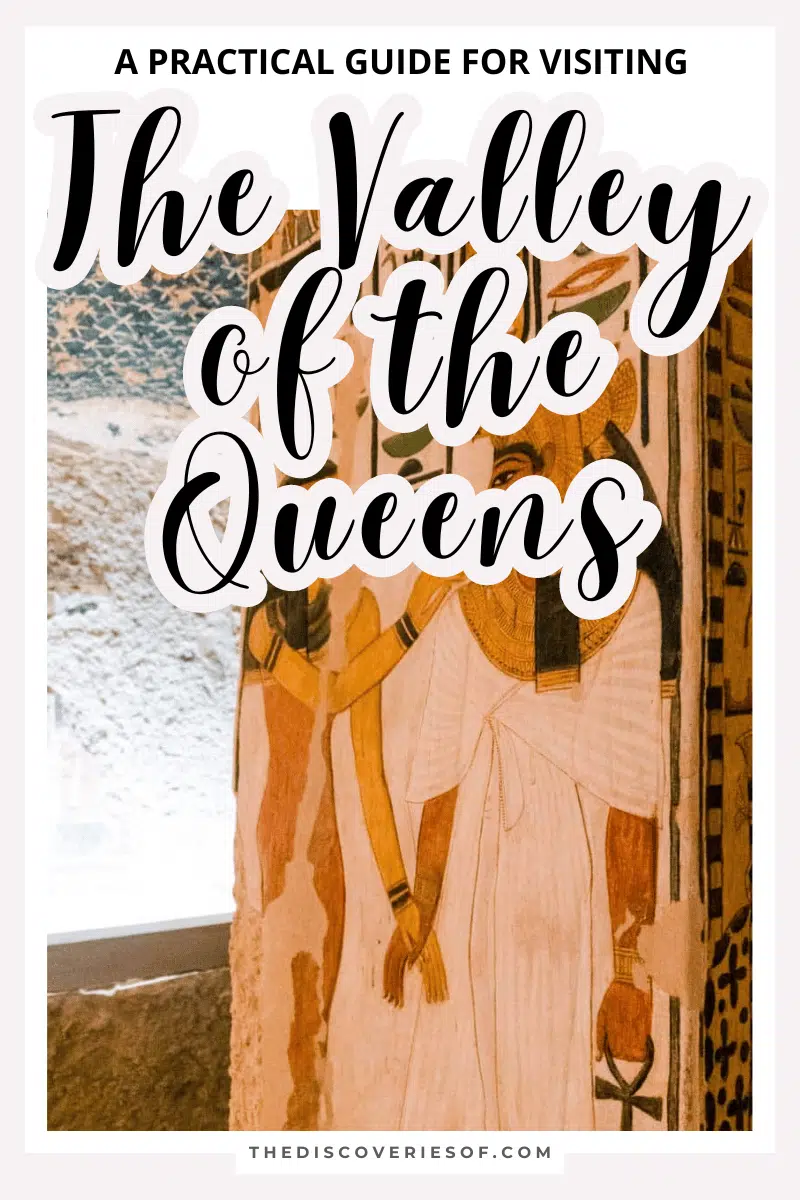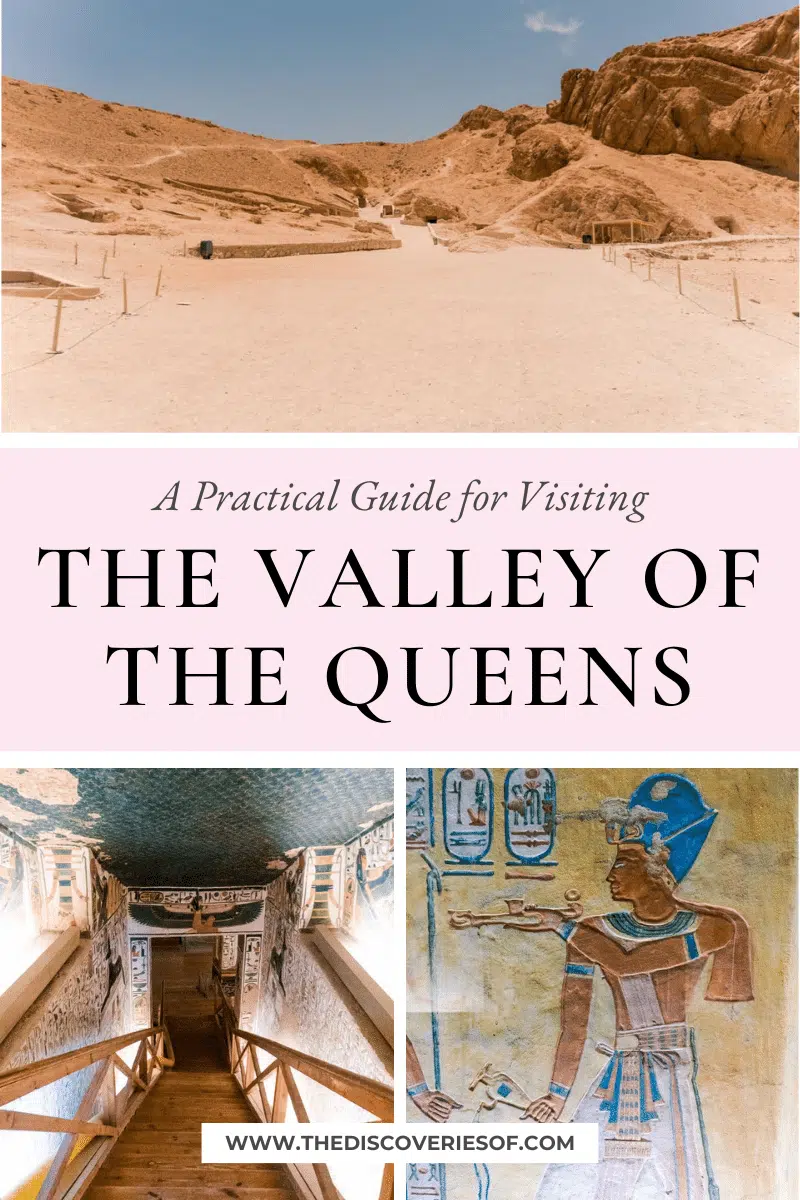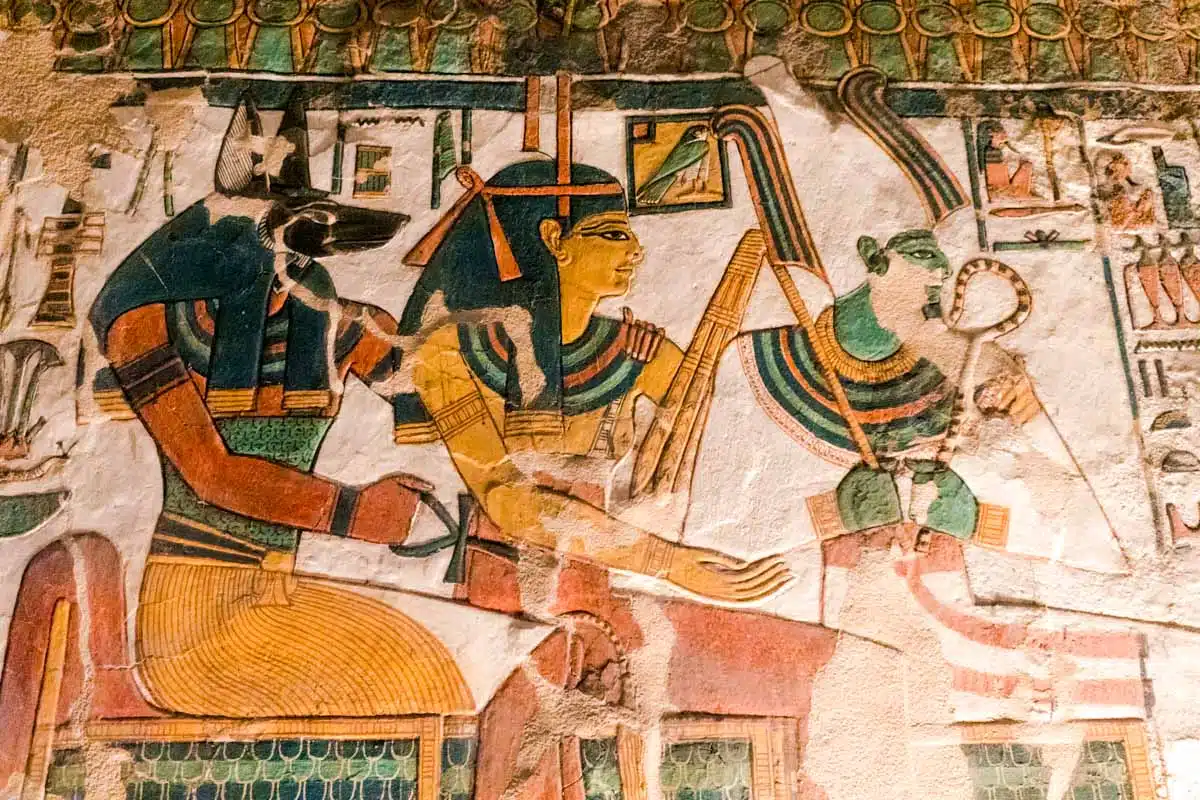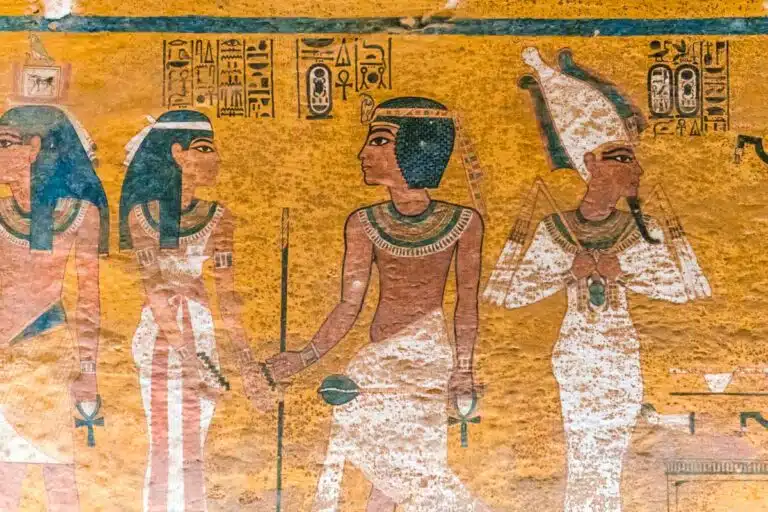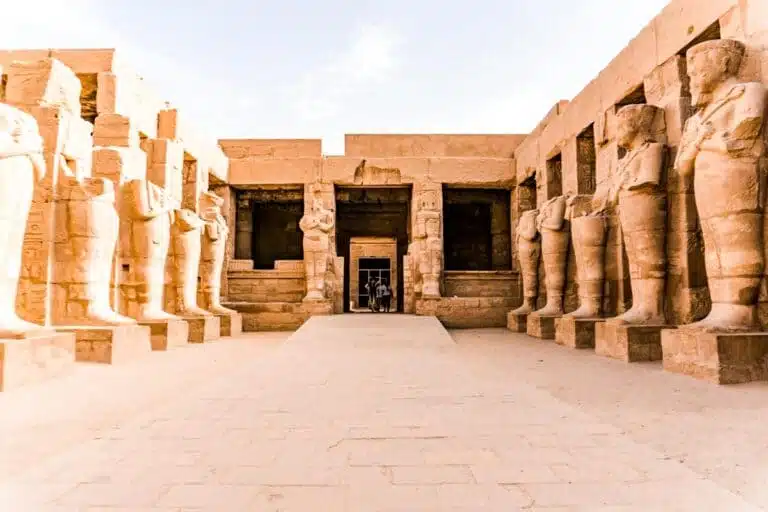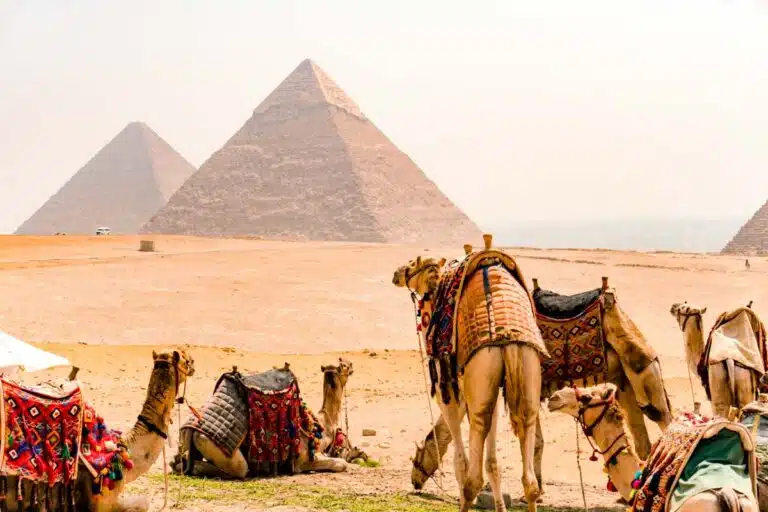The Valley of the Queens sits nestled on the western bank of the Nile in Upper Egypt. Discover everything you need to know to plan your visit to this spectacular destination with this in-depth guide.
While sometimes overshadowed by the Valley of the Kings, a trip to Ta-Set-Neferu (the Valley of the Queens) should be at the top of your Luxor hit-list.
Its gem – the stunning Tomb of Nefertari – is arguably the most beautiful in Egypt. Throw in far fewer crowds and a chance to explore one of Luxor’s lesser-visited spots, and you’ll see why it’s such a treasure.
Not sure where to start? This guide walks you through what you need to know, which tombs you can and should visit and why this epic destination is a must-see.
Top Tip: Before you get to the city, check out my Luxor Travel Guide.
Why Visit The Valley of the Queens?
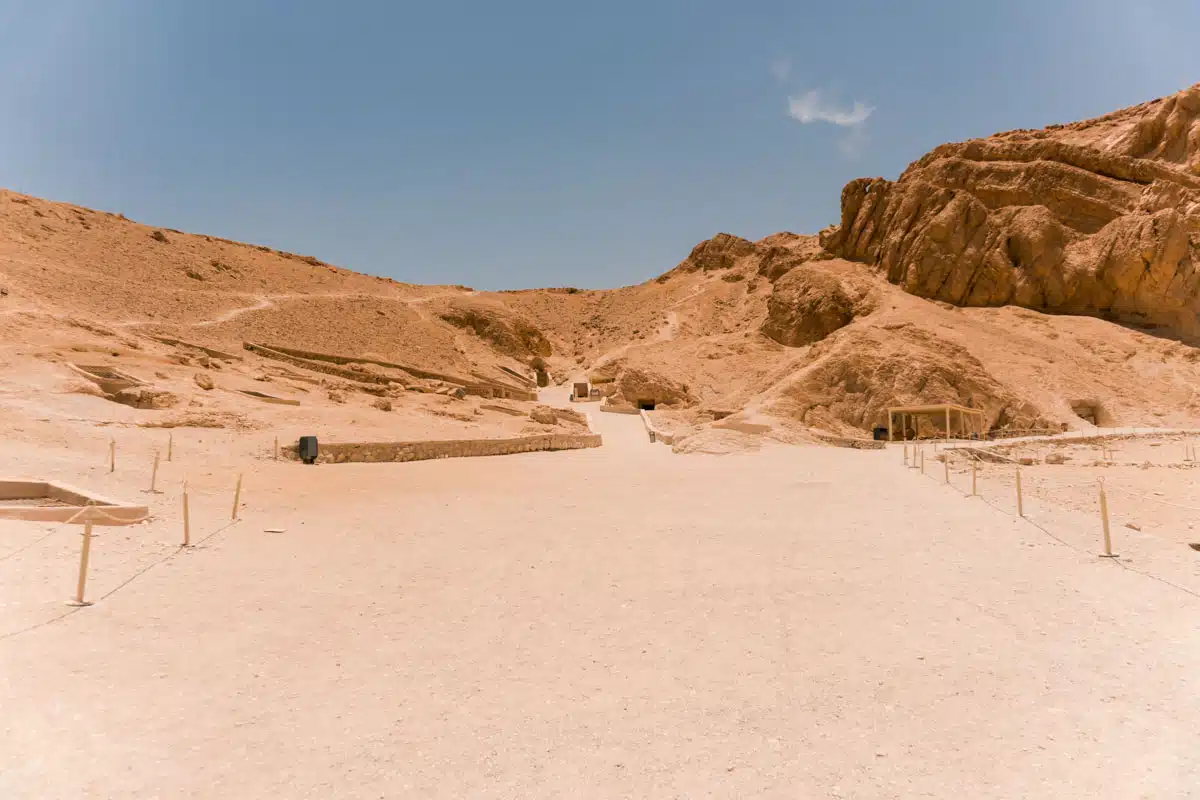
The saying goes that behind every great man is an even greater woman, and the Valley of the Queens is the perfect testimony to the great women of Ancient Egypt. This burial site was started specifically for the wives (and sons) of powerful Pharaohs and their tombs are fascinating.
There are over 90 tombs in the valley, including the flashy tomb of Nefertari. But it’s much less advertised as a tourist spot, so you won’t fight as many crowds as at the Valley of the Kings.
Top Tip: I recommend taking a guided tour as the best way to experience this destination.
What is The Valley of the Queens and Why Does it Exist?
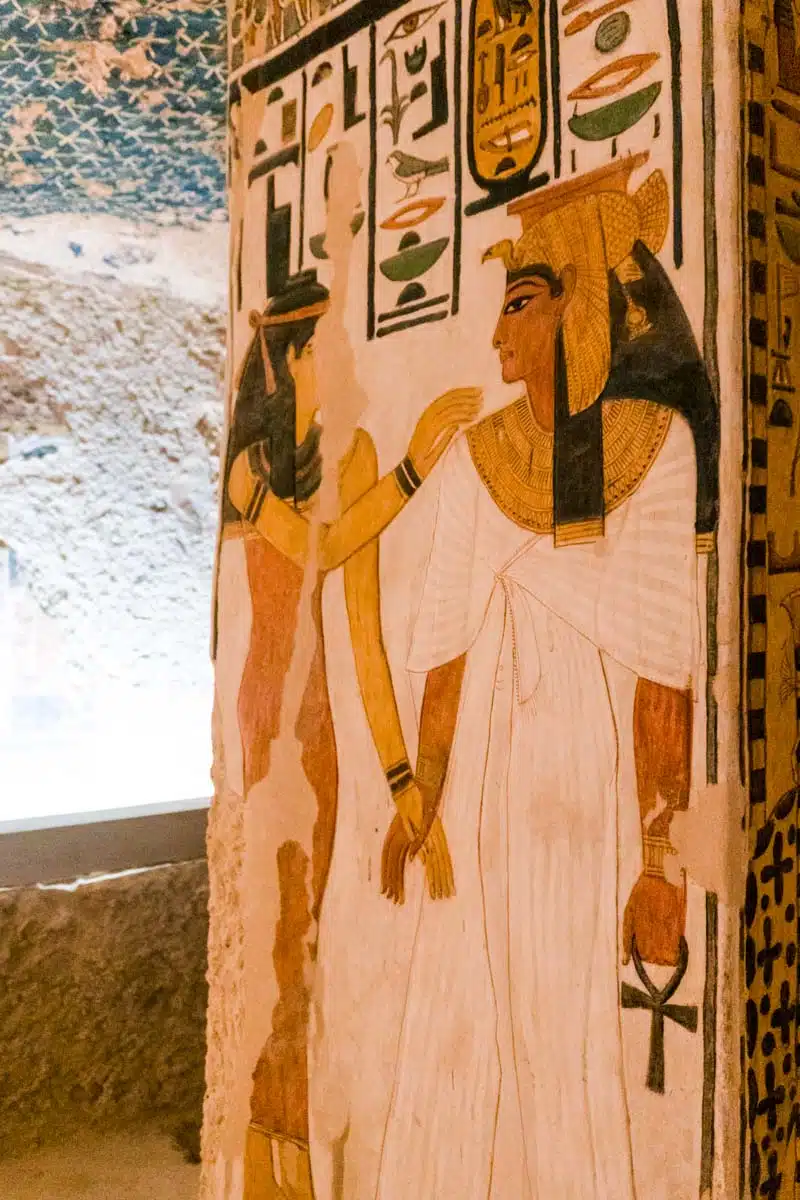
The Valley of the Queens houses the burial tombs of many Egyptian queens, princesses, and princes. It was initially built for the wives of the Pharaohs who weren’t able to be buried in the nearby Valley of the Kings.
This is the primary site where the great and influential queens of Egypt during the 18th to 20th dynasties found their final resting place.
The Valley of the Queens kept the practice of adorning the kings and queens of Egypt with royal tombs.
The Tombs in The Valley of the Queens, Egypt
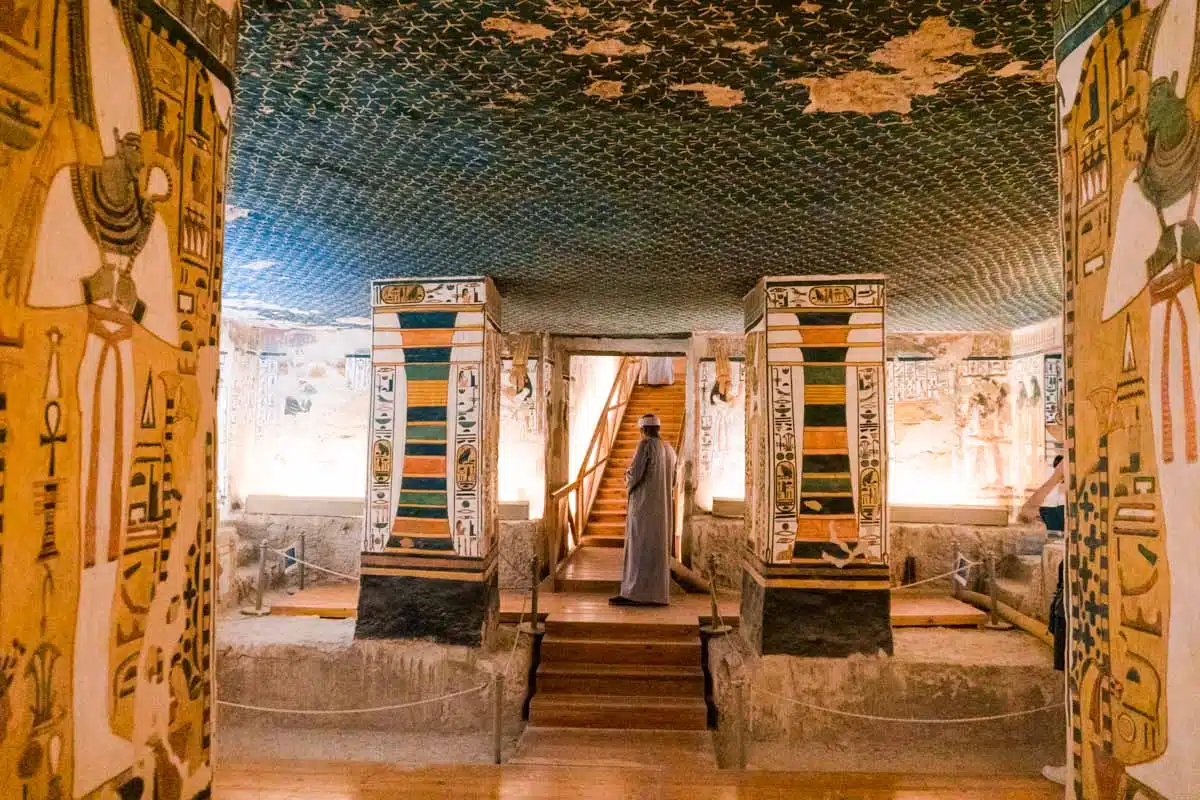
The valley is made up of just over 90 tombs, but not all are open to the public. Here’s a quick guide to the tombs you can enter. Some of these will be included in your general ticket, while others have a separate entry fee.
Valley of the Queens: Tombs Included in Your Ticket
- Queen Titi
- Prince Khaemwaset
- Prince Amenherkhepshef
Prince Khaemwaset (QV44)
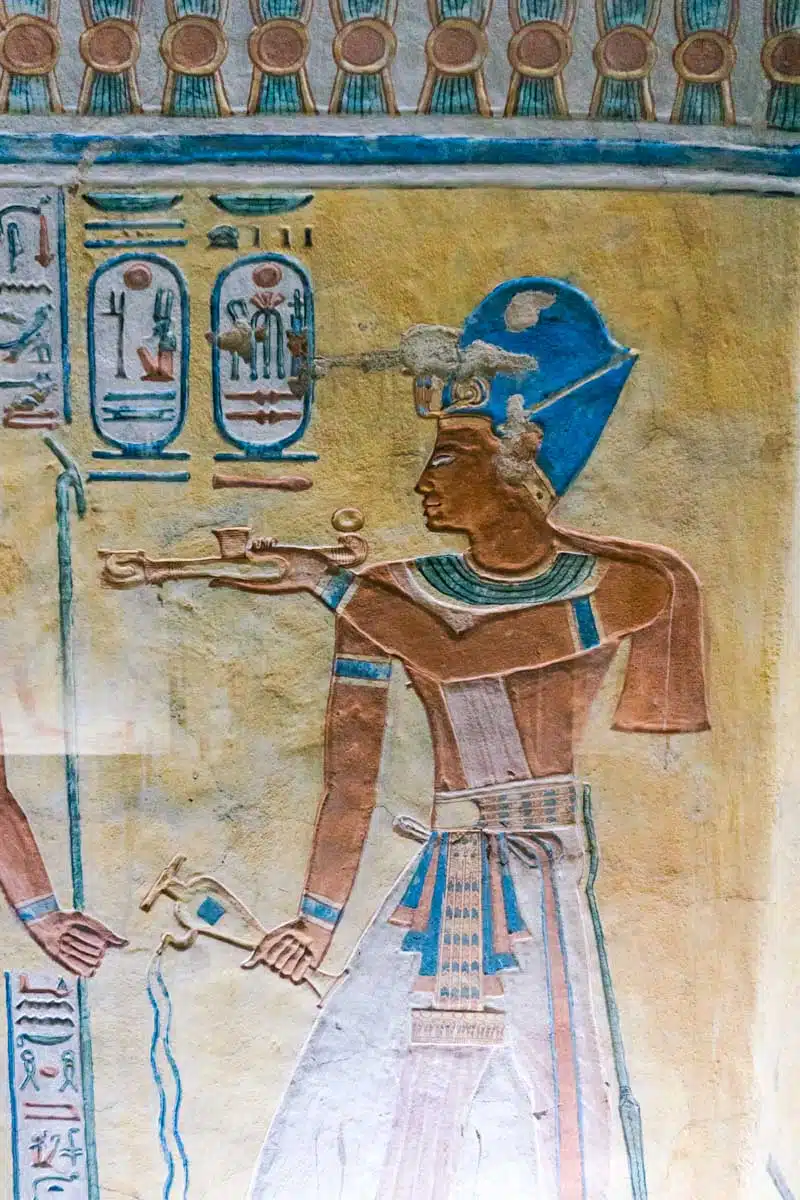
Prince Khaemwaset’s tomb was discovered in February 1903.
Bearing the title Priest of Ptah, Khaemwaset had an important role in the burial of other royals and members of the nobility. His tomb was found with many sarcophagi stacked outside the main entrance.
Inside the tomb, you can marvel at the many well-kept paintings and decorations that remain in outstanding condition today. Many of these depict influences of the afterlife.
Prince Amenherkhepshef (QV55)
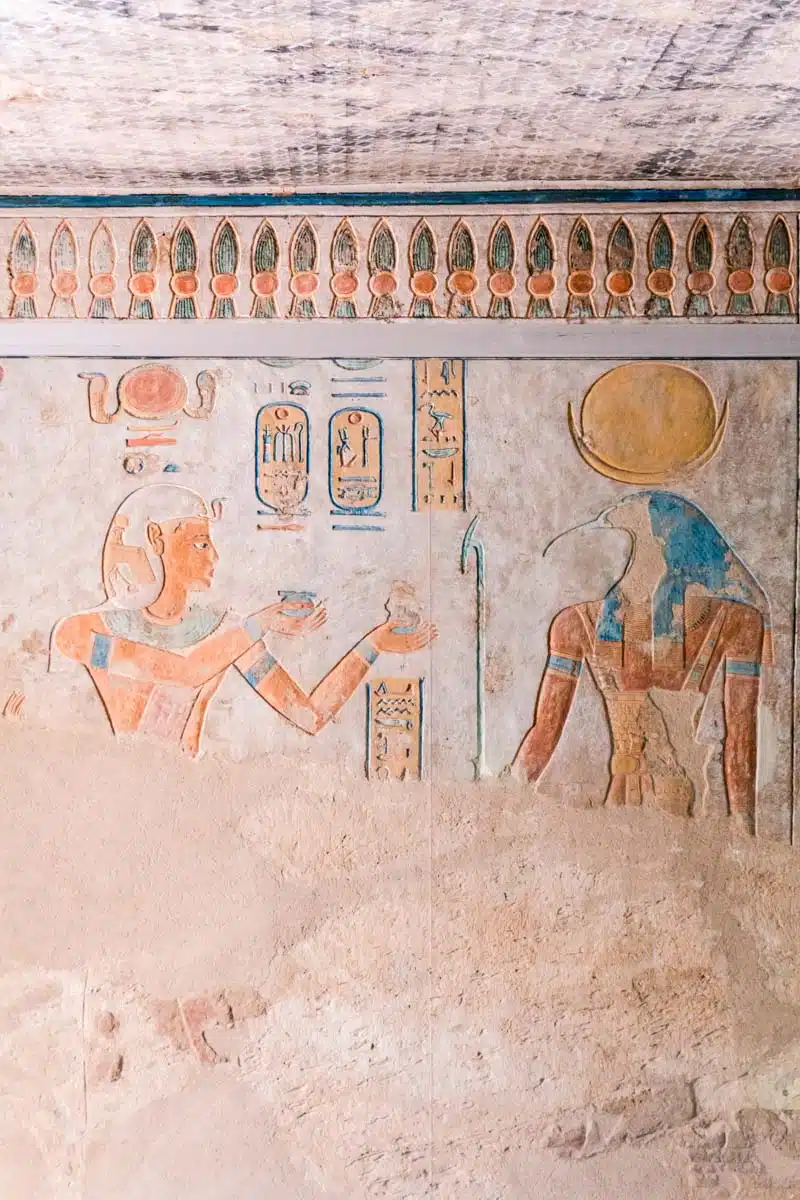
One of Ramesses III’s sons, the tomb of Prince Amenherkhepshef is one of the finest monuments within the Valley of the Queens.
Although years of looting have affected the tomb, the structure and decorations remain immaculate.
Consisting of a simple building plan, the most noteworthy room is the chamber beyond the sarcophagus chamber. This annexe was specifically designated to provide Amenherkhepshef access to the domain of Osiris.
Queen Titi (QV52)
The tomb of Queen Titi is one of the smaller royal tombs found within the Valley of the Queens. What elevates this tomb is the enticing mystery surrounding who exactly Queen Titi was.
From the unique and uncommon depictions inside the tomb, speculation is rife about who exactly she was, her age, and her royal standing. The visible contrasting depictions within the tomb make the mystery even more intriguing.
Valley of the Queens: Tombs You Have to Buy an Extra Ticket For
There is one tomb that you’ll need to pay extra to enter (1200 EGP) – that of Queen Nefertari – but believe me when I say it’s worth the extra charge.
The Tomb of Queen Nefertari (QV66)
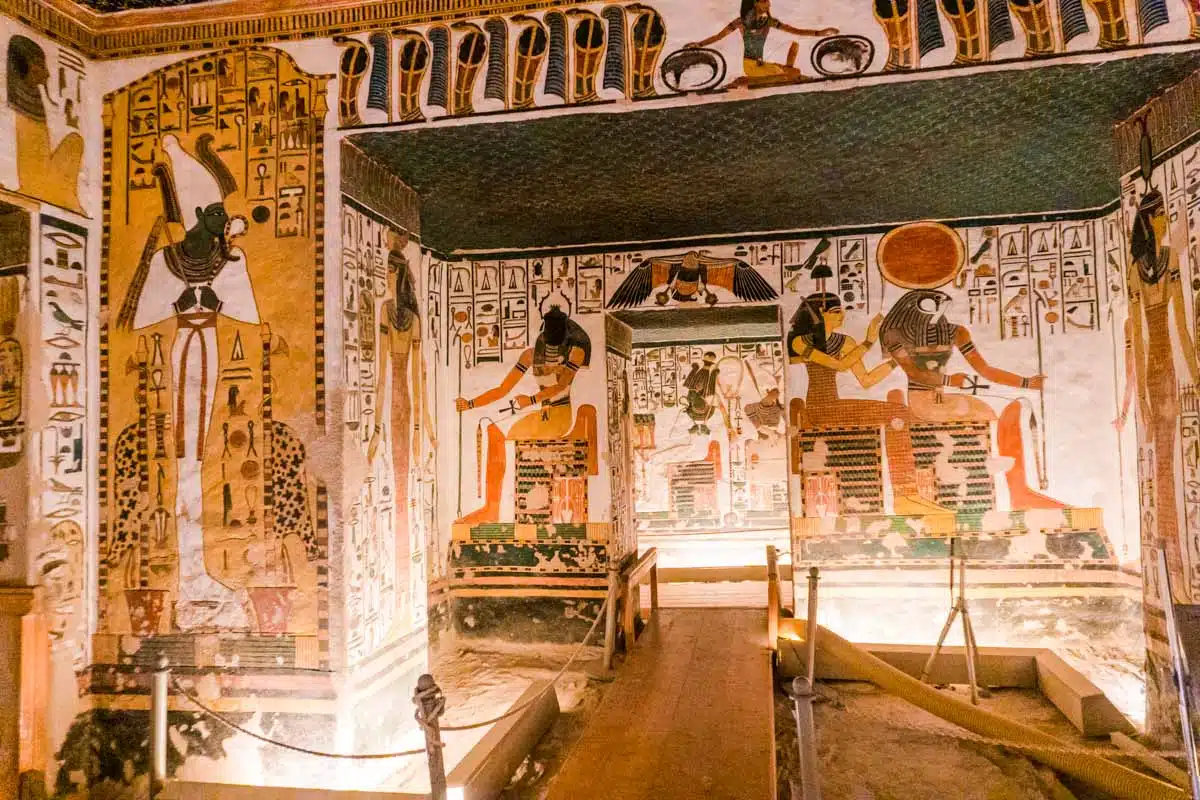
Known as ‘The Great Royal Wife’ of Ramses II, Nefertari was one of the most well-known queens of Egypt. Her tomb is undoubtedly the most eye-catching and exquisite of the many found in the surrounding valley. The walls within her tomb contain fine-detailed artwork, while golden stars adorn the ceilings.
Nefertari’s tomb is the largest and most prominent of all. An equal to the magnificent rock temple dedicated to her within Abu Simbel, the tomb of Queen Nefertari is a must-visit.
Top Tip: Want to know more? Read my guide to visiting Nefertari’s Tomb.
The History of The Valley of the Queens
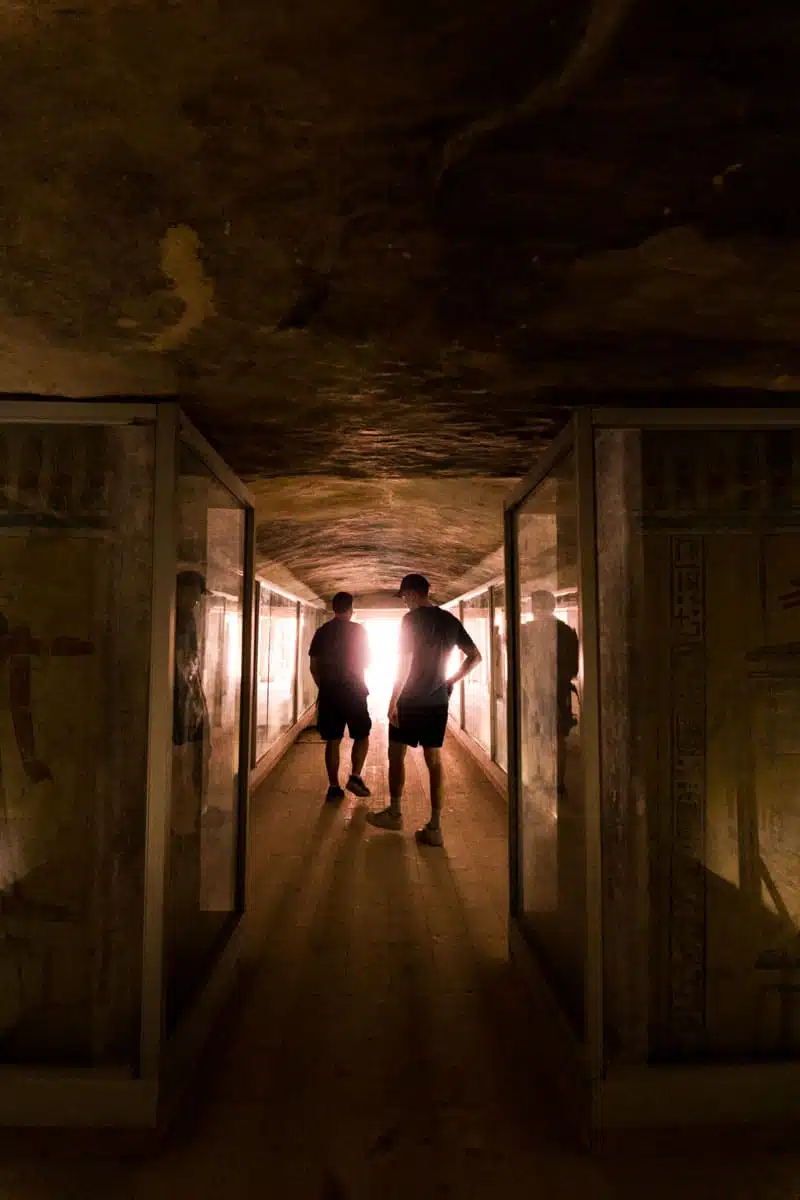
Originally dedicated to the wives of many of the great rulers of Egypt, Ta-Set-Neferu, or ‘the place of beauty’, is one of the biggest ancestral highlights of ancient Egypt.
Although planned as the final resting place for the Egyptian queens, specifically during the age of the New Kingdom, many other members of nobility found their eternal tombs within the valley.
Before construction of the first tomb in the valley (that of princess Ahmose) – sometime around 1292 B.C. – it was the custom for the wives of pharaohs to be buried alongside their counterparts.
Planning Your Visit to The Valley of the Queens
Visiting The Valley of the Queens on a Tour
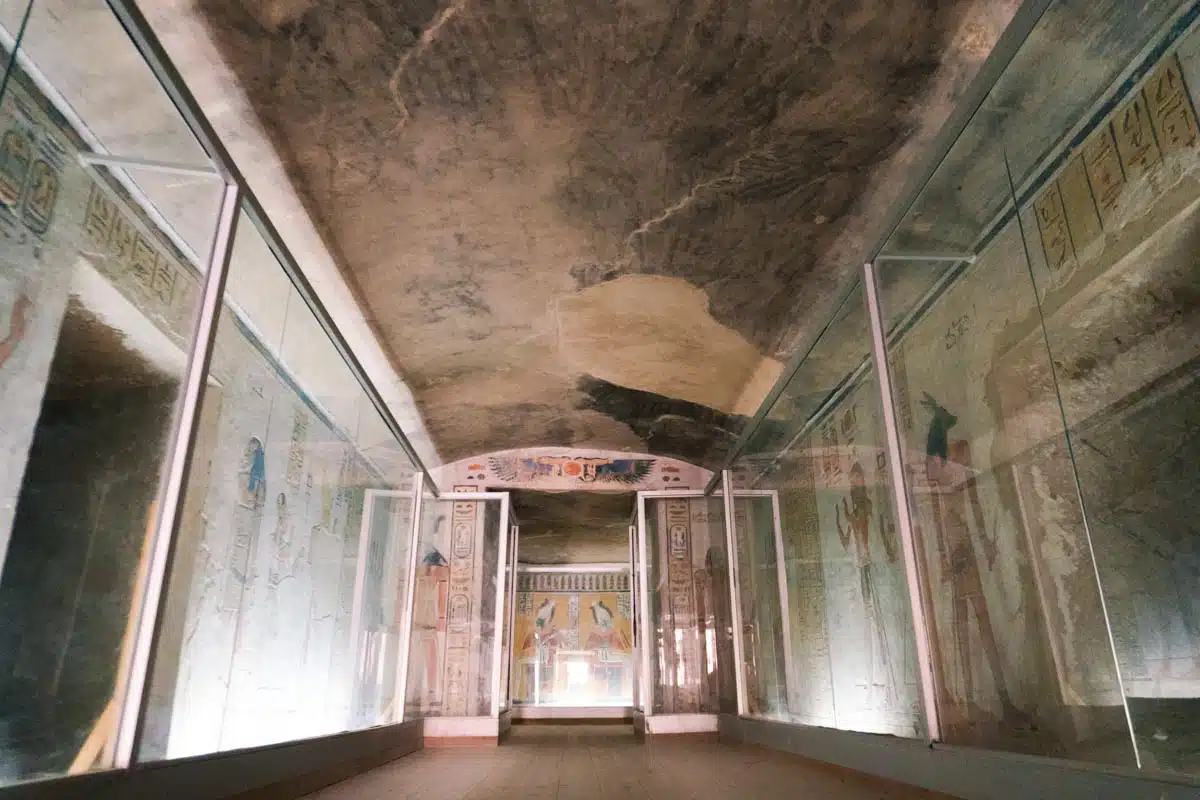
Although it’s great just taking a stroll around the Valley of the Queens to take it all in, I recommend taking a tour so you can learn more about the history of the valley and its residents. This 1-day tour explores The Valley of the Queens, Hatshepsut’s Temple and Karnak.
Visiting The Valley of the Queens Independently
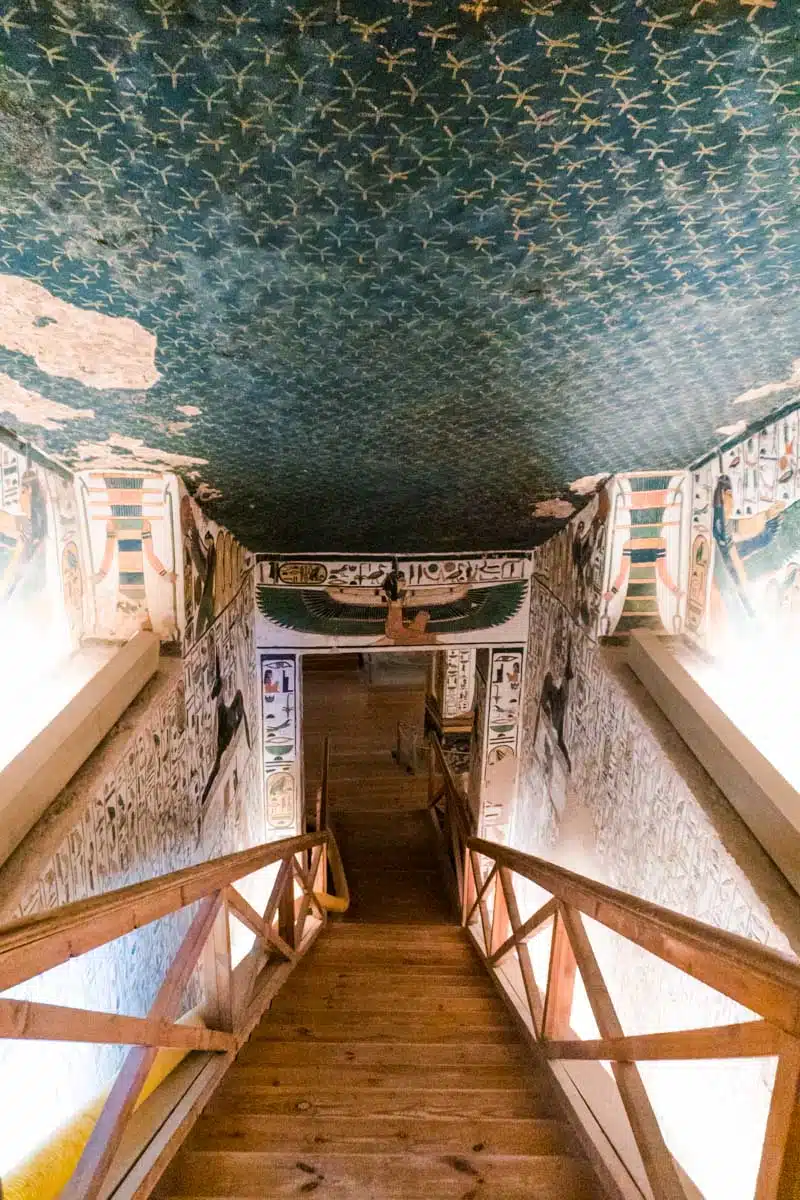
If you choose to tackle the Valley of the Queens without a pre-planned tour, you get the advantage of exploring and adventuring at your own pace. With numerous options available you can choose to use a public taxi, bus services, or by private rental car.
You’ll pay an independent fee when you visit the valley on your own. Your basic entry ticket to the Valley of the Queens will cost you £5 or $6 (50 EGP).
Where to Stay for The Valley of the Queens
Sofitel Winter Palace Luxor (Mid-Range – High-End)
Located on the East Bank of the Nile, the Sofitel Winter Palace Luxor is a mix of Victorian architecture and modern finishings. The oasis-like outdoor pool lined by palm trees delivers the perfect spot to slip into ultimate relaxation after a day spent discovering ancient Egypt.
The Valley of the Queens: Address
Physical Address: Luxor, Luxor Governorate 1340410, Egypt
Opening Times
The Valley of the Queens is open daily but hours depend on the season:
- Summer & Spring – 7 am to 7 pm
- Winter & Autumn – 7 am to 5 pm
The Valley of the Queens: Map
The Valley of the Queens: Read Next
Love This? Save and Share on Pinterest
